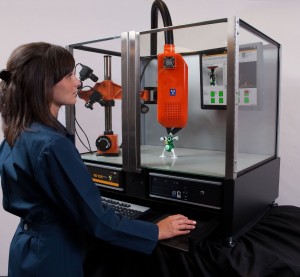Jul 17 2010
XOS announces the approval of a new ASTM Standard Test Method for measuring lead in paint and substrates. The new test method, designated ASTM F2853, was initiated by ASTM Committee F40 on Declarable Substances in Materials, which addresses issues related to the development of standards for the evaluation of materials/products relative to government regulations.
XOS developed High Definition X-Ray Fluorescence (HDXRF) in response to the lower lead limits regulated under the Consumer Product Safety Improvement Act (CPSIA) and was designated to manage development of the method.
 High Definition X-Ray Fluorescence analyzer
High Definition X-Ray Fluorescence analyzer
The efficacy of ASTM F2853 was established through an extensive inter-laboratory study involving preeminent third party testing companies, government labs, and major toy manufacturers. The study incorporated over 1000 measurements on nearly three dozen samples. The method was formally approved in early July and will be published and available from ASTM within a few weeks. XOS also recently met with the U.S. Consumer Product Safety Commission (CPSC) to review HDXRF results for measuring lead and other regulated heavy metals.
While the new test method applies to the quantification of lead, HDXRF also accurately measures other regulated heavy metals such as cadmium and antimony, in both paint and substrates, including plastics, metals, glass and a variety of other materials. A key feature of HDXRF analyzers, such as HD Prime and HD Equity, is their ability to accurately and separately quantify toxic elements in both surface coatings and substrates of consumer products. Unlike other established chemical techniques which require time consuming paint removal and off-line processing, HDXRF offers rapid, non-destructive measurement for both coatings and substrates. The low detection limit of HDXRF, typically down to single digit parts per million, eliminates false negative readings that may occur with the use of traditional XRF analyzers.
“This new method provides industry with an affordable, precise and easy to use technique for quantifying even low levels of lead in both paint and substrates. HDXRF provides precision and sensitivity equivalent to that of ‘wet’ chemical techniques, while still maintaining the speed, ease of use and non-destructive nature of traditional XRF,” said Satbir Nayar, Product Manager - HDXRF. “This will benefit both manufacturers and consumers, by making it easier to accurately test for lead, resulting in improved compliance, safer products, and lower testing and manufacturing costs.”